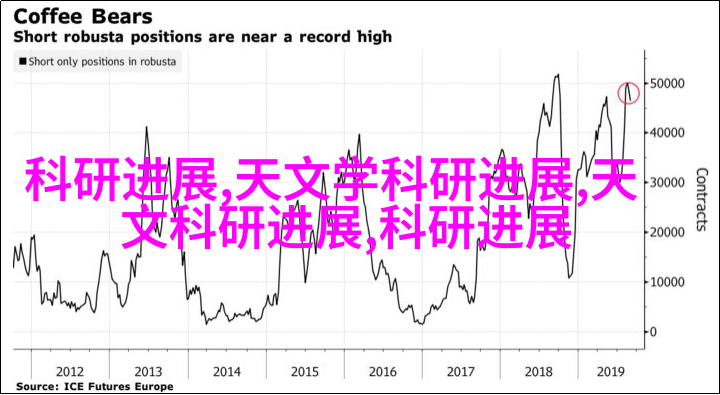特文特大学教授讲述用于健康和气候的芯片实验室、细胞和器官

直播时间:2024年12月6日(周五)20:00-21:30
直播平台:

科学网APP
https://weibo.com/l/wblive/p/show/1022:2321325108545124434224
(科学网微博直播间链接)

科学网微博

科学网视频号
【直播简介】
北京时间2024年12月6日晚八点,iCANX Talks 第215期邀请到了特文特大学Albert van den Berg教授作为主讲嘉宾,特文特大学Mathieu odijk,Loes segerink两位教授也也将进行分享!北京大学张海霞教授担任研讨嘉宾,特文特大学Christian A. Nijhuis教授担任主持人。
这将是一场汇聚顶尖学者的盛会,共同探讨前沿科技与学术挑战!更多精彩,敬请期待!
【嘉宾介绍】

Albert van den Berg
特文特大学
Labs, Cells and Organs on Chip for Health and Climate
【Abstract】
The recent rapid developments in bionanotech and micro/nanofluidic technologies have enabled the realization of miniaturized laboratories. These Labs-on-a-Chip will play an important role in future medicine, both in point-of-care devices for drug or biomarker monitoring, as well as in early diagnostic devices. A disposable chip for rapid measurement of lithium in whole blood for manic depressive patients is presented. Microfluidics can also be exploited to manipulate and experiment with cells on chip. We have developed a microsystem for sperm analysis and selection for artificial insemination, where we can electrically detect and sort healthy sperm cells. Apart from diagnostic and cell manipulation devices, microfluidic devices are increasingly used to realise advanced disease and organ-models, as illustrated by the a blood vessel on a chip to study atherosclerosis. These Organs on Chip may lead to more rapid and cheaper drug development, personalised medicine and improved disease models, while minimizing or even eliminating animal testing (3R principle). Finally, examples of microfluidics for climate are presented. A microfluidic impedance spectroscopy system will be presented that can monitor the calcification of coccolithophores (algae), while some initial work on a microreactor to study accelerated weathering of olivine will be discussed.
生物纳米技术和微/纳流控技术的快速发展,使得微型实验室的实现成为可能。这些芯片实验室在未来医学中将扮演重要角色,无论是在药物或生物标志物监测的现场护理设备中,还是在早期诊断设备中。本文介绍了一种用于躁郁症患者全血中锂快速测量的一次性芯片。微流控技术还可以被利用来在芯片上操纵和实验细胞。我们开发了一种用于精子分析和选择的微系统,用于人工授精,我们可以电学检测和排序健康的精子细胞。除了诊断和细胞操纵设备外,微流控设备越来越多地被用来实现先进的疾病和器官模型,如用于研究动脉粥样硬化的血管芯片。这些芯片上的器官可能会导致药物开发更快速、更便宜,个性化医疗和改进的疾病模型,同时最小化甚至消除动物测试(3R原则)。最后,介绍了微流控技术在气候方面的应用示例。将介绍一种微流控阻抗谱系统,可以监测颗石藻(藻类)的钙化,同时讨论一些关于研究橄榄石加速风化微反应器的初步工作。
【BIOGRAPHY】
Professor Albert van den Berg received his MSc in applied physics in 1983, and his PhD in 1988 both at the University of Twente, the Netherlands. From 1988-1993 he worked in Neuchatel, Switzerland, at the CSEM and the University of Neuchatel (IMT) on miniaturized chemical sensors. In 2000 he was appointed as full professor on Miniaturized Systems for (Bio)Chemical Analysis in the faculty of Electrical Engineering and part of the MESA+ Institute for Nanotechnology. In 1994 he initiated together with Prof. Bergveld the international MicroTAS conference series. He published over 700 peer reviewed publications and from his group > 10 spin-off companies started. He received several honors and awards such two ERC Advanced (2008, 2015) and four ERC Proof of Concept (2011, 2013, 2016, 2020) grants, Simon Stevin award (engineering sciences, 2002), Spinoza prize (2009), Distinguished University Professor (Twente, 2010), Distinguished Professor (South China Normal University SNCU (China), 2012), Consulting Professor at Northwestern Polytechnic University NPU (China), 2017) and member of the Royal Dutch Academy of Sciences (KNAW) (board member from 2011-2016). From 2014-2018 he was scientific director of the MIRA institute for Biomedical Engineering. In 2017 he became co-PI of the Max Planck - University of Twente Center for Complex Fluid Dynamics. In 2018 he became (co)director of MESA+ Institute for Nanotechnology. He has been editor of Sensors and Actuators B, cofounding member of the editorial board of the RSC journal Lab on a Chip, founding member of EUROoCS, the European Organ on Chip Society and founding director of the CBMS, the Chemical and Biological Microsystems Society. In 2022 he was elected member of the SATW (CH). His current research interests are micro/nanofluidics, Labs on Chip and sensing for health and sustainability and Organs on Chip. His current activities include acting as one of the quartermasters of the UT Climate Centre.
阿尔伯特·范登伯格教授于1983年在荷兰特温特大学获得应用物理硕士学位,1988年获得博士学位。1988年至1993年,他在瑞士纳沙泰尔的CSEM和纳沙泰尔大学(IMT)工作,专注于微型化学传感器。2000年,他被任命为电气工程学院的微型系统(生物)化学分析全职教授,也是纳米技术研究所MESA+的一部分。1994年,他与伯格费尔德教授共同发起了国际微全分析系统会议系列。他发表了700多篇同行评审的出版物,他的团队中有超过10家衍生公司。他获得了多项荣誉和奖项,包括两次ERC高级(2008年,2015年)和四次ERC概念验证(2011年,2013年,2016年,2020年)资助,西蒙·斯蒂文奖(工程科学,2002年),斯宾诺莎奖(2009年),特温特大学杰出教授(2010年),华南师范大学(中国)杰出教授(2012年),西北工业大学(中国)咨询教授(2017年),荷兰皇家科学院(KNAW)成员(2011-2016年董事会成员)。2014年至2018年,他担任生物医学工程研究所MIRA的科学主任。2017年,他成为马克斯·普朗克-特温特大学复杂流体动力学中心的共同首席研究员。2018年,他成为纳米技术研究所MESA+的(共同)主任。他曾是传感器和执行器B的编辑,RSC期刊芯片实验室的编辑委员会共同创始成员,欧洲芯片器官学会EUROoCS的创始成员,以及化学和生物微系统学会CBMS的创始主任。2022年,他被选为SATW(CH)的成员。他目前的研究兴趣包括微/纳流控学、芯片实验室和健康与可持续性的传感以及芯片上的器官。他目前的活动包括担任特温特大学气候中心的四分之一管理员。

Mathieu Odijk
特文特大学
Microreactors for operando studies of chemical reactions
【ABSTRACT】
Microreactors are small microfluidic chips that carry out chemical reactions in micrometer-sized channels. The precise control of mass transport and temperature, as well as the optical accessibility, make these chips the perfect tools to study chemical reactions in great detail in situ or under operando conditions. In this talk, I will highlight two different microreactors we have developed to study the heterogeneity of individual catalyst particles. In the first device, we screen and sort the most active catalyst particles using droplet microfluidics, followed by dielectrophoretic sorting. The second chip is designed to subsequently study the performance of a single catalyst particle in operando conditions using 3D x-ray holotomography at high pressure (>100 bar) and temperature (>300°C).
微反应器是小型微流控芯片,它们在微米尺寸的通道中进行化学反应。对质量传输和温度的精确控制,以及光学可访问性,使得这些芯片成为在原位或操作条件下详细研究化学反应的理想工具。在本次演讲中,我将重点介绍我们开发的两种不同的微反应器,用于研究单个催化剂颗粒的异质性。在第一个设备中,我们使用滴液微流控技术筛选和排序最活跃的催化剂颗粒,然后进行介电电泳排序。第二个芯片旨在在高压(>100巴)和高温(>300°C)下使用3D X射线全息层析成像技术,随后研究单个催化剂颗粒在操作条件下的性能。
【BIOGRAPHY】
Prof. Dr. Ir. Mathieu Odijk (University of Twente) leads a research group in Micro- and Nanodevices for Chemical Analysis, part of the BIOS Lab on a Chip group. In his work, he develops microfabricated tools for various applications, including biology and catalysis. The applied engineering-driven nature of his work has resulted in a strong portfolio containing (fully) industrially funded projects (Ligalli, Paebbl, River Biomedics). He received a VENI grant in 2014, and supervised 19 Ph.D. students (+6 current) and 5 post-docs (+2 current). He is an active partner in the joint innovation center ‘BioMicrosystems Centre’ of TNO and the University of Twente, a strategic collaboration to bridge the gap from academia to industry by developing modular and manufacturable microfluidic devices.
马修·奥德克教授(特温特大学)领导一个研究小组,专注于微纳设备用于化学分析,是BIOS芯片实验室的一部分。在他的工作中,他开发了用于各种应用的微制造工具,包括生物学和催化。他的工作具有应用工程驱动的性质,已经形成了一个强大的项目组合,包括(完全)由工业资助的项目(Ligalli, Paebbl, River Biomedics)。他于2014年获得了VENI资助,并指导了19名博士生(+6名在读)和5名博士后(+2名在读)。他是联合创新中心‘BioMicrosystems Centre’的活跃合作伙伴,该中心是TNO和特温特大学的战略合作伙伴,旨在通过开发模块化和可制造的微流控设备,从学术界到工业界架起桥梁。

Loes Segerink
特文特大学
Early cancer detecting on-chip
【ABSTRACT】
Detecting cancer in an early stage of the disease enhances the success and often impact of the treatment. Additionally, also for follow-up after the treatment measuring the presence of cancer biomarkers is essential. In collaboration with Amsterdam UMC, we are working at a new diagnostic method to detect biomarkers in urine for bladder cancer. In this presentation we will show, how microfluidic systems can help in improving the follow-up and diagnosis.
在疾病早期发现癌症可以提高治疗的成功率,并且往往对治疗产生影响。此外,治疗后对癌症生物标志物的测量也是至关重要的。我们与阿姆斯特丹大学医学中心合作,正在开发一种新的诊断方法,用于检测尿液中的膀胱癌生物标志物。在这次演讲中,我们将展示微流控系统如何帮助改善后续治疗和诊断。
【BIOGRAPHY】
In October 2007, I joined the group of prof. dr. Albert van den Berg, not knowing at that time that choosing this PhD position would lead to the start of my own line of research. During my PhD project, I developed a point-of-care semen analyser system that measured the concentration and motility of spermatozoa in human semen. After 4 years, I successfully defended my work and its impact has been recognized by the Simon Stevin Leerling award (2011), Simon Stevin Gezel award (2012), and enormous media exposure. After obtaining my PhD, I started as a postdoc in the same group and co-founded the spinoff Cellanyzer B.V. for which I received the STW Valorisation grant phase 1 and 2 (2012) In 2013, I worked for several months in the group of prof. dr. Helene Andersson Svahn (KTH, Sweden) on the use of paper microarrays for rapid biomarker detection in serum. In that same year, I received my Veni grant to develop new techniques to assess and select spermatozoa for assisted reproductive technologies. In October 2014 I became an assistant professor (tenure track) at the University of Twente, followed by associate professor in October 2017, adjunct professor in May 2019 and full professor in July 2021. Since 2022 I am the chair of the BIOS lab on a chip group. Thirteen PhD students have successfully defended their theses under my supervision. My research focuses on biomedical microdevices. I can divide my current research into four themes (1) spermatozoa on chip; (2) organs on chip (3) biomarker detection on chip and (4) protoplast on chip. In these areas I am currently supervising a total of ten PhD students and four postdocs. Characteristic of my research are the translational component, multidisciplinary approach, and outreach activities, which I fulfil with great enthusiasm and pleasure.
2007年10月,我加入了阿尔伯特·范登伯格教授的研究小组,当时并不知道选择这个博士职位将开启我自己的研究方向。在我的博士项目中,我开发了一种现场护理分析系统,用于测量人类中精子的浓度和活力。四年后,我成功地为我的研究成果进行了辩护,其影响获得了西蒙·斯蒂文学习奖(2011年)、西蒙·斯蒂文奖章(2012年)以及巨大的媒体曝光。获得博士学位后,我在同一小组开始做博士后,并共同创立了Cellanyzer B.V.这家衍生公司,我因此获得了STW Valorisation的第一阶段和第二阶段资助(2012年)。2013年,我在瑞典皇家理工学院(KTH)的Helene Andersson Svahn教授小组工作了几个月,研究如何使用纸微阵列快速检测血清中的生物标志物。同年,我获得了VENI资助,用于开发新技术评估和选择辅助生殖技术中的精子。2014年10月,我成为特温特大学的助理教授(终身教职),随后在2017年10月成为副教授,2019年5月成为兼职教授,2021年7月成为全职教授。自2022年以来,我担任BIOS芯片实验室小组的主席。在我的监督下,已有十三名博士生成功完成了他们的论文答辩。我的研究重点是生物医学微设备。我可以将我当前的研究分为四个主题(1)芯片上的精子;(2)芯片上的器官;(3)芯片上的生物标志物检测;(4)芯片上的原生质体。在这些领域,我目前正在指导总共十名博士生和四名博士后。我的研究特点是转化组件、多学科方法和外联活动,我以极大的热情和愉悦履行这些职责。



